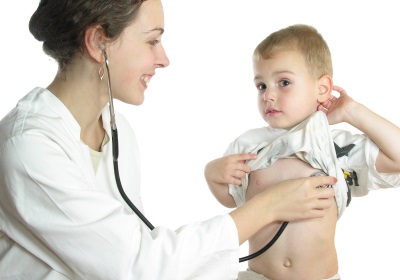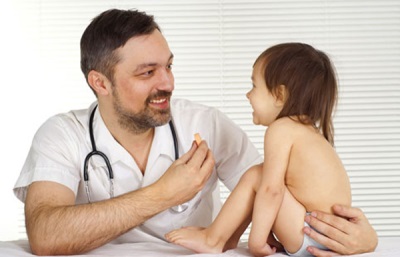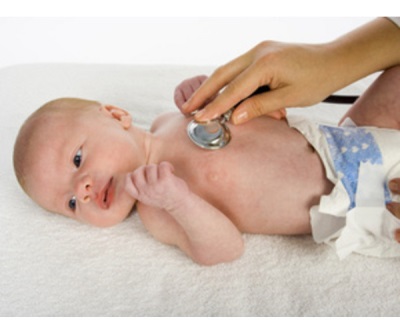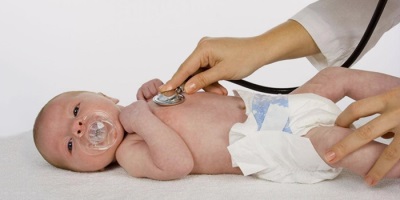Tachycardia in children
Heart rhythm disturbances are quite common in childhood. Among them, most often in children reveal tachycardia. Therefore, all parents need to know how this problem manifests itself and is diagnosed, as well as how to help the child with tachycardia.
What is it
Tachycardia in children is called an increased heart rate. At the same time, its feature is the dependence of heart rate indicators on the age of the child, since the pulse rate rates for children of different ages are different. For example, in 1 year old babies, the rate of heart beats per minute is 94-154 contraction, in children 4-6 years of age, the normal heart rate is 86-126 beats, and after the age of 10 years, the heart is normally reduced 60-100 times per minute. The excess of such indicators by 10-20% suggests that tachycardia.
The reasons
In children, an increased number of heartbeats can be caused by both physiological factors and the development of the disease. Such non-dangerous reasons as staying in a stuffy room, a temperature difference in the room, physical exertion, anxiety, fear, or worries can cause small tachycardia.
Also, an increase in heart rate occurs with fever, excess weight, dehydration, and taking certain medications. In a newborn, due to the high activity of the sinus node, the rise in heart rate is possible even when viewing crumbs and swaddling. In adolescents, attacks of tachycardia are often associated with active growth and changes in the functioning of the nervous system.
Among the pathological causes of tachycardia, cardiac (congenital malformations, myocarditis, cardiomyopathy, trauma, heart failure, cardiac surgery) and extracardiac (damage to the nervous system, diseases of the endocrine glands, anemia, respiratory inflammation, systemic diseases, etc.) are distinguished. The frequency of heartbeats can also increase with electrolyte imbalance or hypoglycemia.
Symptoms
In many cases, child tachycardia, especially for physiological reasons, does not have any particular manifestations. Very young children can behave restlessly, refuse food, be capricious.
Older children, for example, at the age of 7, when tachycardias occur, may complain that they feel palpitations, discomfort or pain in the chest, weakness, dizziness or nausea. They have pallor, sweating and shortness of breath, fainting may occur.
Kinds
In childhood, these types of tachycardias are diagnosed:
- Sinus. So called tachycardia, in which the rhythm remains sinus (controlled by the work of the sinus node). In most cases of tachycardia in children, it is the sinus type that is diagnosed. Such tachycardia is moderate (heart rate rises by 10-20%), moderate (with an increase in heart rate by 20-40%) and severe (the number of heartbeats exceeds the norm by 40-60%). Most often, this rhythm disorder is not dangerous, and the attacks of such tachycardia are on their own. Long-term sinus tachycardia, which can cause heart failure, is dangerous for children.
- Paroxysmal. This is a more dangerous variant of tachycardia in children, which is manifested by sudden attacks (they are called paroxysms). Depending on the affected area, such tachycardia is divided into ventricular (caused by myocardial damage) and supraventricular (often caused by extracardiac problems). Paroxysmal tachycardia in newborns is quite dangerous, as its attacks can cause cardiac arrest.
Diagnostics
Having noticed a rapid heartbeat in a child or having identified it during a routine examination by a doctor, it is important to examine the toddler in more detail, starting with an electrocardiogram, a blood test and an ultrasound of the heart. In some cases, the child is sent to a chest x-ray, hormone level analysis, and a consultation with a neurologist.
Treatment
Tactics of the doctor in detecting tachycardia in children is determined by the cause of increased heart rate. If the attack is caused by a physiological cause and after its elimination the heartbeat has returned to normal, no treatment is required.
For diseases not related to the heart, a specialist will be involved in treating tachycardia, for example, an endocrinologist will treat thyroid problems. If tachycardia is caused by heart disease, a pediatric cardiologist should prescribe treatment for the child.
If a child has had a tachycardia attack, it is important for parents to ensure that the child has access to air by removing tight clothes and opening a window before the doctor arrives, and also apply a damp cloth moistened with cool water to his forehead. You can also ask your child to take a deep breath with a breath.
To prevent tachycardia attacks in a child, it is important:
- Balance the diet of the baby.
- Do not allow the child to gain excess weight.
- Limit stress.
- To streamline the daily regimen, paying attention to proper sleep and rest.
- Encourage moderate exercise.
- According to indications take vitamin and sedative drugs.
In the next video, the pediatrician will talk in more detail about tachycardia, its causes, and ways to treat a child for his illness.














